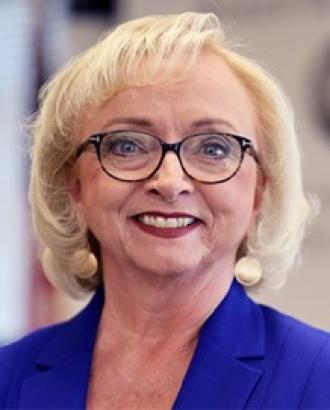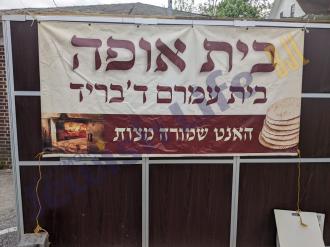The Food and Drug Administration on Monday approved a drug for a wide range of cancers based on a shared mutation, rather than the tumors’ locations – an advance for the sometimes controversial field of “precision medicine.”
The medication, called Vitrakvi, is the second treatment to receive FDA clearance based on a common biomarker found in an array of cancers. The drug, also called larotrectinib, was approved simultaneously for both adults and children. Typically, oncology drugs are considered much later for children.
Last year, the agency, for the first time, approved an immunotherapy drug for tumors with a specific genetic signature, regardless of where they originated in the body. But that treatment already had been cleared for several cancers, including advanced melanoma.
The drug approved Monday is for patients with advanced solid tumors containing what’s called an NTRK gene fusion, a hybrid of two genes that can promote uncontrolled cell growth. Cancers of the thyroid, lung and head and neck, among others, can be caused by the defect. The drug is for patients whose cancer has spread or who would experience severe complications by undergoing surgery and have no satisfactory alternatives.
The price for the breakthrough drug is high. The drug’s manufacturer, Loxo Oncology, Inc., and its partner Bayer, announced Monday night that the wholesale acquisition cost will be $32,800 for a 30-day supply of capsules for adults. The cost for the liquid formulation for children will be based on the patient’s surface area but will start at $11,000 per month.
The drug’s manufacturer, Loxo Oncology, Inc., now faces a huge challenge: Finding patients who might benefit. Only an estimated 2,000 to 3,000 people a year in the United States develop NTRK-related cancers.
“The million-dollar question is: How do you know you have the fusion that the drug treats?” said Josh Bilenker, the chief executive of Loxo. The mutation occurs in less than 1 percent of most solid tumor types, but is common in malignancies such as adult salivary cancer and infantile fibrosarcoma.
The only way to find the mutation is through much broader genetic tumor testing. But while patients at academic medical centers with advanced cancer typically are tested, many people do not undergo genetic tumor testing in the community settings where 80 percent of cancer patients receive care. And while Medicare covers some genetic testing, private insurers are much less likely to pay for it.
Precision medicine in recent years has generated immense enthusiasm. But it also has spurred skepticism, in part because both the drugs and tests tend to be expensive.
“Patient affordability is one of the big barriers to precision medicine right now,” said Carolyn Presley, a geriatric oncologist at Ohio State University Comprehensive Cancer Center. “Show me the money – how are you going to pay for it?”
But Elizabeth Jaffee, an oncologist at Johns Hopkins, said that the cost of sequencing has been falling and that precision medicine “is going to be the way to treat cancer in the future.” And David Hyman, an oncologist at Memorial Sloan Kettering Cancer Center who led pivotal trials of larotrectinib, said, “There’s no way that in five to 10 years we will be taking care of patients with cancer and not trying to understand their genetic situation.”
When Briana Ayala of El Paso began having severe back pain at 11, she was diagnosed with a sarcoma – a soft-tissue tumor – that was wrapped partly around her aorta. The growth was removed two years ago in a high-risk operation, but it returned in her spine, prompting doctors to test her tumors. When NTRK alterations turned up, she began taking larotrectinib as part of a clinical trial. and her tumors disappeared. Now 14, Briana is a freshman in high school and dreaming of becoming a fashion designer.
“This was lifesaving for her,” said Theodore Laetsch, a pediatric oncologist at University of Texas Southwestern and Children’s Health in Dallas who was involved in her treatment.
The FDA said the efficacy of the drug was studied in three clinical trials involving 55 children and adults. The patients had a 75 percent overall response rate across different types of solid tumors, with almost all the responses lasting six months and 39 percent lasting a year or more. Common side effects included fatigue, nausea and dizziness.
For Acra Samuels, the drug had a dramatic effect but one that didn’t last. In 2016, she had tumors throughout her colon, liver and lungs. “I was in really bad shape,” said the Big Sky, Mont., resident. When tumor sequencing at Dana Farber Cancer Institute in Boston showed that NTRK fusions were driving the malignancies, she enrolled in a clinical trial.
The Loxo treatment worked for seven months, said George Demetri, a Dana-Farber oncologist. But as with many other targeted therapies, the cancer mutated and in June 2017 scans showed the tumors in her abdomen and pelvis were growing rapidly. The drug company, worried about such resistance, was already working on a second-generation drug aimed at new mutations. “We knew if it did not work, I had a month,” said Samuels.
The tumors shrank sharply within weeks. She later had surgery to remove a tumor outside her liver.
Today, “I am doing very well at the moment,” the 47-year-old said in a recent email. “My last three scans have shown that my disease is stable. I am enjoying life and thankful for every day.”
















